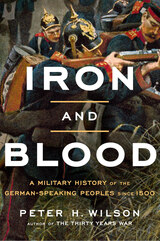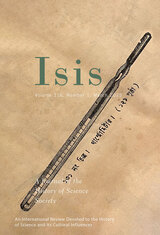4 books about Meszaros, Julia

The Complete Short Stories, Volume 1
Enid Dinnis
Catholic University of America Press, 2023
Gathered here for the first time are the stories of Enid Dinnis, who lived and wrote in London throughout the first half of the 20th century. Enid Dinnis moved widely in the London literary world but she was also Mother Superior of a ‘hidden’ religious order, The Daughters of the Heart of Mary. Few in London’s literary scene knew that Dinnis was a nun but she lived most of her life in a small convent in Wimbledon with other well-known figures from the period, including Maud Petre. Dinnis wrote Catholic stories for readers of all ages. She is one of the finest lost authors of the Catholic Literary Revival. Dinnis’s intervention in the short story genre is considerable. She weaves together fairy tale, myth, Catholic mysticism, epiphanic dialogue and everyday characterization to produce stories that are both simple and complex, both light-hearted and profound. Always concerned with ‘the wonderful resourcefulness of the love of God’, her stories proclaim the presence and workings of divine grace in the everyday lives of all people—old and young, sceptics and seekers, farmers and priests. Dinnis’s stories show that God’s love is the answer to all human struggles and quests. They illustrate what it means to receive love – human and divine – and to pass it on. Her work is filled with visions and confessions, miracles and conversions – but it is never overly pious or saccharine. Her characters are real people experiencing the truths proclaimed by the Catholic faith, which is always as marvelous as it is every-day. Enid Dinnis’s stories reenchant the post-enlightenment world along Catholic lines. Her stories put the supernatural firmly back into the world in a way more needed than ever.
[more]
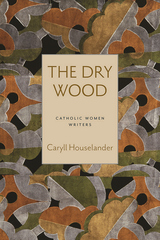
The Dry Wood
Caryll Houselander
Catholic University of America Press, 2021
In the English-speaking world, the Catholic Literary Revival is typically associated with the work of G. K. Chesterton/Hilaire Belloc, Evelyn Waugh and Graham Greene. But in fact the Revival’s most numerous members were women. While some of these women remain well known⎯Muriel Spark, Antonia White, Flannery O’Connor, Dorothy Day - many have been almost entirely forgotten. They include: Enid Dinnis, Anna Hanson Dorsey, Alice Thomas Ellis, Eleanor Farjeon, Rumer Godden, Caroline Gordon, Clotilde Graves, Caryll Houselander, Sheila Kaye-Smith, Jane Lane, Marie Belloc Lowndes, Alice Meynell, Kathleen Raine, Pearl Mary Teresa Richards, Edith Sitwell, Gladys Bronwyn Stern, Josephine Ward, and Maisie Ward.
There are various reasons why each of these writers fell out of print: changes in the commercial publishing world after World War II, changes within the Church itself and in the English-speaking universities that redefined the literary canon in the last decades of the 20th century. Yet it remains puzzling that a body of writing so creative, so attuned to its historical moment, and so unique in its perspective on the human condition, should have fallen into obscurity for so long.
The Catholic Women Writers series brings together the English-language prose works of Catholic women from the 19th and 20th centuries; work that is of interest to a broad range of readers. Each volume is printed with an accessible but scholarly introduction by theologians and literary specialists.
The first volume in the series is Caryll Houselander’s The Dry Wood. Houselander is known primarily for her spiritual writings but she also wrote one novel, set in a post-war London Docklands parish. There a motley group of lost souls are mourning the death of their saintly priest and hoping for the miraculous healing of a vulnerable child whose gentleness in the face of suffering brings conversion to them all in surprising and unexpected ways. The Dry Wood offers a vital contribution to the modern literary canon and a profound meditation on the purpose of human suffering.
[more]
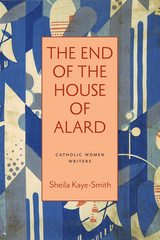
The End of the House of Alard
Sheila Kaye-Smith
Catholic University of America Press, 2022
The Catholic University of America Press is pleased to present the second volume in our Catholic Women Writers series, which will attempt to bring new attention to prose work of Catholic women writers from the 19th and 20th centuries. Sheila Kaye-Smith was a best selling author who had published over 50 books in her lifetime, few of which remain in print since her death in 1956.
The End of the House of Alard (1922) documents the choices made by the final generation of the aristocratic Alard family and the ways in which they, both willingly and reluctantly, bring the long line of their ancestral blood to a complete and sudden end. For some of them, the end of the Alard line is as painful to enact as it is for others to witness; for others it is welcomed as a necessary modernization or a true realignment toward religious integity and universal human truth. Some of the family's children yearn for individual liberty; others have it forced upon them. But none of them can find it under the burden of the Alard name and its crumbling estate. The End of the House of Alard is a novel about the human need for purpose, for a truth by which to live and for which to die. It is a novel about faith and idolatry, love and death, freedom and bondage, nature and grace. Put another way, it is about how human beings cannot escape the great challenge of salvation, of breaking free from false, man made gods in order to unite instead with the divine love of Christ. The novel's characters span a breadth of options on this spectrum and their various outlooks on life continue to reflect those available to us today.
[more]
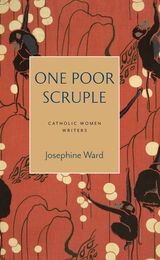
One Poor Scruple
Josephine Ward
Catholic University of America Press, 2022
The Catholic University of America Press is pleased to continue to present new volumes in our Catholic Women Writers series, which will shed new light on prose work of Catholic women writers from the 19th and 20th centuries.
Josephine Ward is one of Catholicism’s greatest literary treasures and a foremost contributor to English literary history – except that she has all but completely fallen from the historical record. She spent her life in close companionship with the most active minds working in the late 19th century to restore to the Catholic Church in England the intellectual, sacramental and theological integrity it had once enjoyed before three hundred years of persecution. All seven of her novels are out of print, despite their once high acclaim in the fin de siècle literary world.
First published in 1899, One Poor Scruple follows the recusant Riversdale family who have survived the long penal years by observing a quiet aristocratic life of sport and agriculture, never stepping into the public sphere from which Catholics in Britain had been barred for so long. But at the start of the twentieth century, a new generation has emerged. The novel’s younger characters are now legally able to go to Oxford and Cambridge and to enter the public life of letters. Emboldened by the confident work of John Henry Newman, this younger generation of Catholics are nonetheless cautioned not to trust the Protestant establishment. One Poor Scruple is a coming-of-age story in which the new generation of more worldly Catholics search for love, friendship and intellectual emancipation in the decadent social world of Edwardian London. Decades before Evelyn Waugh examined in Brideshead Revisited the human struggle to distinguish between true and false beauty, Ward’s novel examined the challenge of discerning between conflicting desires and of living a life that is as truthful and good as it is beautiful.
[more]
READERS
Browse our collection.
PUBLISHERS
See BiblioVault's publisher services.
STUDENT SERVICES
Files for college accessibility offices.
UChicago Accessibility Resources
home | accessibility | search | about | contact us
BiblioVault ® 2001 - 2025
The University of Chicago Press





